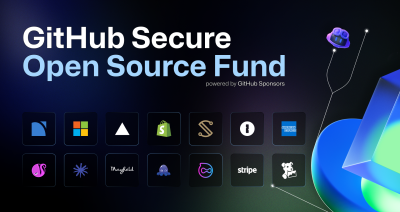GitHub Security Lab

Our plan for a more secure npm supply chain
Addressing a surge in package registry attacks, GitHub is strengthening npm’s security with stricter authentication, granular tokens, and enhanced trusted publishing to restore trust in the open source ecosystem.

Safeguarding VS Code against prompt injections
When a chat conversation is poisoned by indirect prompt injection, it can result in the exposure of GitHub tokens, confidential files, or even the execution of arbitrary code without the user’s explicit consent. In this blog post, we’ll explain which VS Code features may reduce these risks.

Securing the supply chain at scale: Starting with 71 important open source projects
Learn how the GitHub Secure Open Source Fund helped 71 open source projects significantly improve their security posture through direct funding, expert guidance, and actionable playbooks.

Modeling CORS frameworks with CodeQL to find security vulnerabilities
Discover how to increase the coverage of your CodeQL CORS security by modeling developer headers and frameworks.

CVE-2025-53367: An exploitable out-of-bounds write in DjVuLibre
DjVuLibre has a vulnerability that could enable an attacker to gain code execution on a Linux Desktop system when the user tries to open a crafted document.

GitHub Advisory Database by the numbers: Known security vulnerabilities and what you can do about them
Use these insights to automate software security (where possible) to keep your projects safe.

Hack the model: Build AI security skills with the GitHub Secure Code Game
Dive into the novel security challenges AI introduces with the open source game that over 10,000 developers have used to sharpen their skills.

DNS rebinding attacks explained: The lookup is coming from inside the house!
DNS rebinding attack without CORS against local network web applications. Explore the topic further and see how it can be used to exploit vulnerabilities in the real-world.

Inside GitHub: How we hardened our SAML implementation
Maintaining and developing complex and risky code is never easy. See how we addressed the challenges of securing our SAML implementation with this behind-the-scenes look at building trust in our systems.

Bypassing MTE with CVE-2025-0072
In this post, I’ll look at CVE-2025-0072, a vulnerability in the Arm Mali GPU, and show how it can be exploited to gain kernel code execution even when Memory Tagging Extension (MTE) is enabled.

How to request a change to a CVE record
Learn how to identify which CVE Numbering Authority is responsible for the record, how to contact them, and what to include with your suggestion.

Localhost dangers: CORS and DNS rebinding
What is CORS and how can a CORS misconfiguration lead to security issues? In this blog post, we’ll describe some common CORS issues as well as how you can find and fix them.

A maintainer’s guide to vulnerability disclosure: GitHub tools to make it simple
A step-by-step guide for open source maintainers on how to handle vulnerability reports confidently from the start.

Sign in as anyone: Bypassing SAML SSO authentication with parser differentials
Critical authentication bypass vulnerabilities (CVE-2025-25291 + CVE-2025-25292) were discovered in ruby-saml up to version 1.17.0. In this blog post, we’ll shed light on how these vulnerabilities that rely on a parser differential were uncovered.
The world's largest developer platform
GitHub
Build what’s next on GitHub, the place for anyone from anywhere to build anything.
The GitHub Podcast
Catch up on the GitHub podcast, a show dedicated to the topics, trends, stories and culture in and around the open source developer community on GitHub.
